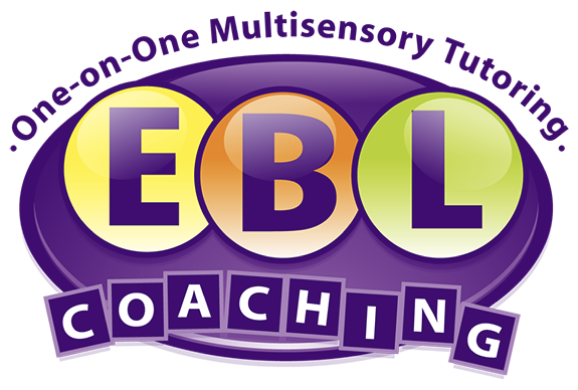
Latest National Report Card Says Kids’ Reading Scores Have Hit All-Time Lows

A new report from the National Assessment of Educational Progress paints a sobering picture of children’s reading levels. The report, based on 2024 test scores, found that a record-low number of fourth and eighth-grade students in the U.S. had below-basic reading skills.
According to the NAEP, one-third (33%) of eighth graders had “below-basic” reading skills — the largest number since the exam began in 1969. Additionally, 40% of fourth graders’ reading skills were considered “below-basic,” the most in two decades.1
“Not only did most students not recover from pandemic-related learning loss, but those students who were the most behind and needed the most support have fallen even further behind,” the U.S. Department of Education said in a statement.
As troubling as these numbers are, they open the door for constructive conversation.
“The National Report Card does not negate that some individual schools, individual teachers, and students are doing a great job,” says Karen Aronian, Ed.D., an education and parenting expert. “However, the NAEP report card is a wake-up call, an overview for our country to take stock of how students, teachers, and schools are performing so they can recalibrate.”
Education and literacy experts discuss the reasons for the low reading skills scores and share small ways parents can foster a love of reading from an early age.
Expert Theories Behind Low Reading Scores
In what may sound like an all-too-familiar refrain, the pandemic likely plays a role here.
Emily Levy, Ed.D., a learning specialist and the founder and director of EBL Coaching, points out that most kids who were in fourth grade in 2024 were in kindergarten during the pandemic.
“Kindergarten is a time when the foundations of reading are established,” she says. “Students begin to learn the names of the letters and their corresponding sounds and how to blend sounds together to form words. Without these foundations, reading only becomes more challenging as students progress through school, and it was extremely difficult to teach these critical skills remotely to children at such a young age.”
Similarly, students who were in eighth grade in 2024 were fourth-graders during the acute phase of the pandemic.
“That’s a time when we typically see a shift from learning to read to reading to learn, and students are taught essential reading comprehension and inferencing skills,” Dr. Levy notes.
Dr. Aronian says absenteeism also rose during the pandemic and continues to do so. For instance, a 2024 New York State Comptroller report found that approximately one in three New York students were chronically absent during the 2022-23 school year, defined as missing 10% of school days. Alaska had the nation’s highest rates (45%).2
However, experts say attributing the reading scores to a pandemic fallout oversimplifies a complicated issue. In a January 2025 report by the American Enterprise Institute, education researcher Nat Malkus notes that the dip in skills seen in American children mirrors that of adults over the same period.3
He also points to other familiar culprits like screens and social media. The experts Parents spoke with agree.
“While there are some apps and programs that can be valuable educational tools, prolonged exposure to screens and social media can be detrimental to a child’s attention span, interfere with very important critical thinking skills, and impact the ability to ask thought-provoking and high-level questions,” says Kristen Miller, Director of Education at Celebree School, which offers programs for infants to school-aged children.
Miller says scrolling forces people to process information quickly. Ideally, people take time to think about what they are reading or seeing and absorb the information.
Dr. Aronian notes the distracting nature of smartphones and watches in schools, but says that’s changing. (For instance, New York Gov. Kathy Hochul recently introduced a proposal to curb smartphone use in schools.) One hope of policy proposals like these is to help students focus.
In 2024, college professors reported students were arriving on campus unprepared to read full texts and with smaller vocabularies than previous generations, pointing to middle and high school curriculums focusing on comprehending the “main ideas” gleaned from shorter passages.
“I do not think there is a lack of rigor necessarily in the high school curricula, but the stakes are high in public schools as a result of state assessment tests and accountability,” says Jan Lacina, Ph.D., the senior associate dean for research, graduate studies, and strategic partnerships at Texas Christian University’s College of Education. “As a result, district curricula may be structured to prepare children for tests and lack the framework for preparing students to be critical readers, thinkers, and writers.”
How to Help Your Child Love Reading
More funding for teacher development and libraries, less focus on test scores, and more free and accessible in-person tutoring were just a few of the many systemic and structural changes experts point to as necessary to shift reading skills. However, parents can’t change the system overnight by reading bedtime stories to little ones. They can, however, prioritize reading from an early age.
Model behavior
“To encourage children’s reading, parents must model a love of reading and set up reading zones in your home, cars, and for bathtime,” Dr. Aronian says, pointing out that some books are waterproof. “Always have a book in your bag for subway rides, waits in line and downtimes.”
Dr. Lacina suggests discussing your latest reads with your child to show you value literacy.
Make reading routine
“Develop a routine for reading aloud to your child, beginning with an infant and continuing throughout their early childhood years,” Dr. Lacina says. “As children begin to read independently, have your child read to you each day.”
Keep it fun
“Identify topics [your] child is interested in—dinosaurs, unicorns, plants—just about any topic is fine, and find books on that topic for their child to read or for [you] to read to [your] child,” Dr. Levy says. “This might also include magazines, comics, and news articles—anything that will help engage their child and make them enjoy reading.”
